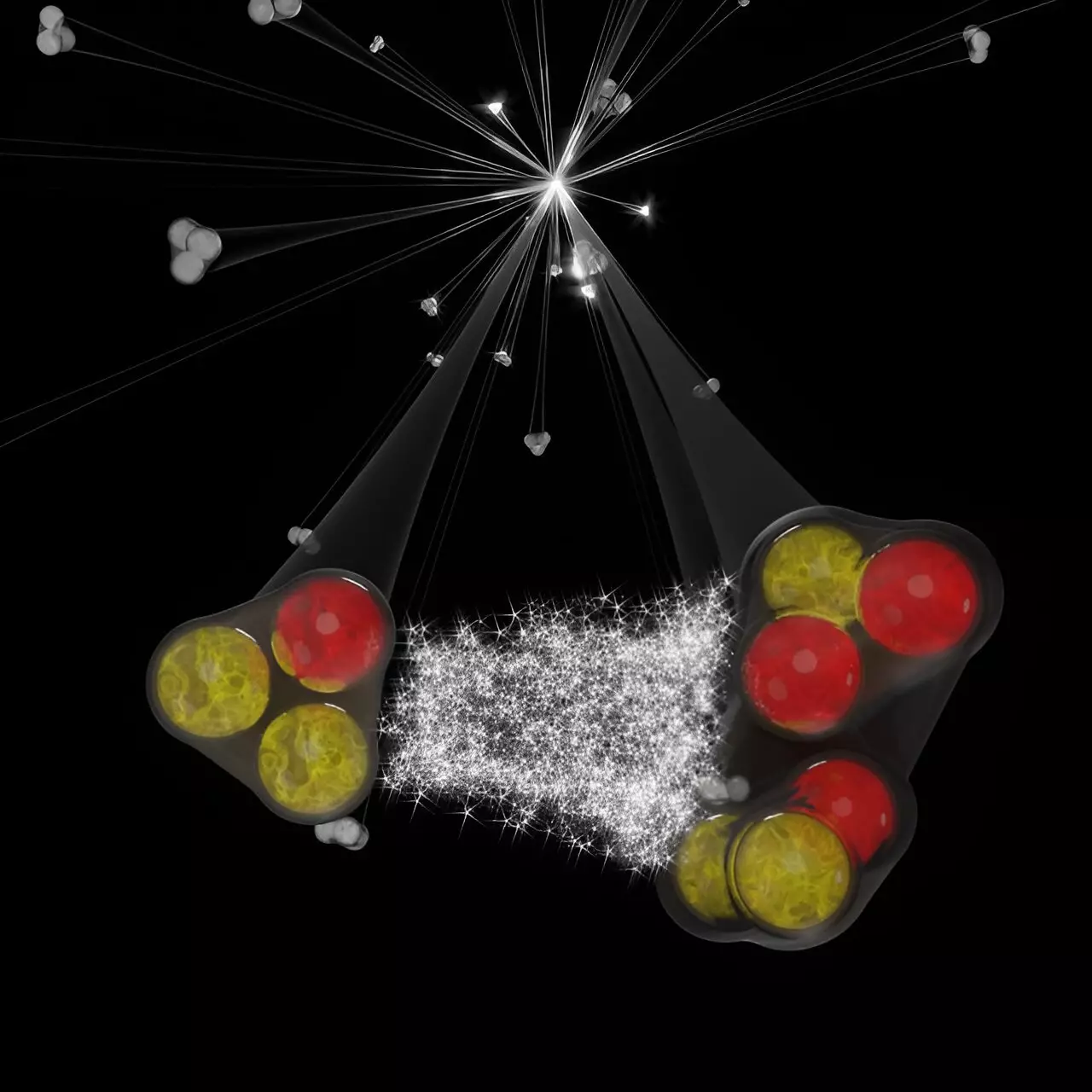Recent advancements by the ALICE collaboration, documented in Physical Review X, have significantly contributed to our understanding of complex three-body nuclear systems. Traditionally, fundamental forces are investigated as interactions between pairs of particles. However, as nuclear systems increase in complexity, particularly those involving three or more bodies, the mathematical and conceptual frameworks used to describe these interactions become more intricate. The study of three-body systems is essential not only for improving our comprehension of nuclear forces but also for exploring broader implications in modern physics, including the characteristics of neutron stars and the fundamental puzzles surrounding nuclear matter.
The ALICE collaboration has seemingly opened a new avenue for exploring these three-body interactions using kaon-deuteron and proton-deuteron systems. In high-energy proton-proton collisions, such as those conducted at the Large Hadron Collider (LHC), producing particles in close proximity allows researchers to analyze the behavior and interaction of these particles before they disperse. An intriguing aspect of this study is the examination of how particles, emitted at distances roughly equivalent to femtometers, may influence one another through various forces, including quantum statistics and strong nuclear interactions.
Particularly fascinating is the emphasis on how these interactions manifest when deuterons (two nucleons bound together) are involved. The interaction dynamics between deuterons and other hadrons, such as protons and kaons, form the crux of the investigation into three-body nuclear interactions. By measuring the correlation and distributions of these particles produced in close proximity, the ALICE collaboration aims to unravel the nuances of these interactive forces.
The correlation functions derived from the experimental data provide insights into the nature of interactions among particles. These functions quantify the likelihood of finding particles with specified momenta relative to one another. A key finding is that values greater than one indicate attractive forces, whereas values less than one suggest repulsion. In this specific study, the ALICE team observed that both kaon-deuteron and proton-deuteron correlations yield values below one for low relative transverse momenta. This result implies a general repulsive interaction at these scales, contributing valuable data to the ongoing discourse on nuclear forces at play in high-energy physics environments.
Moreover, the analysis undertaken by the collaboration reveals that the distance at which these correlations are significant—around 2 femtometers—highlights the short-range dynamics inherent in three-body systems. This short-distance correlation presents a novel approach to exploring the complexities of nuclear interactions, showcasing the sensitivity of the correlation function to minute changes in the system dynamics.
Despite the successes of the study, challenges remain, particularly in the modeling of these interactions. The ALICE collaboration found that while their effective two-body model successfully captured kaon-deuteron correlations, it fell short in accurately representing proton-deuteron correlations. This discrepancy signals the necessity for comprehensive three-body calculations that take into account the structure and characteristics of the deuteron. Through refined theoretical models that accommodate both two-body and three-body interactions, the collaboration achieved commendable data descriptions, illustrating the richness of information that can be gleaned from such intricate systems.
Looking ahead, the potential to extend this investigative framework to upcoming LHC Runs 3 and 4 is promising. The intention to apply similar methodologies to study three-baryon systems in the strange and charm sectors opens the door to experimentally inaccessible realms of particle physics. This forward-thinking approach not only enhances the existing body of research but also sets the stage for groundbreaking discoveries pertaining to the underpinnings of nuclear interactions.
The collaboration’s work offers an innovative lens through which to view three-body interactions, bridging theoretical predictions with empirical findings. As research in nuclear physics progresses, the exploration of such configurations could illuminate foundational aspects of matter and the universe’s structure, pushing the boundaries of our current understanding. The study serves as a vivid reminder of how collaboration, innovation, and perseverance continue to drive scientific advancements in some of the most intricate fields of modern physics.

